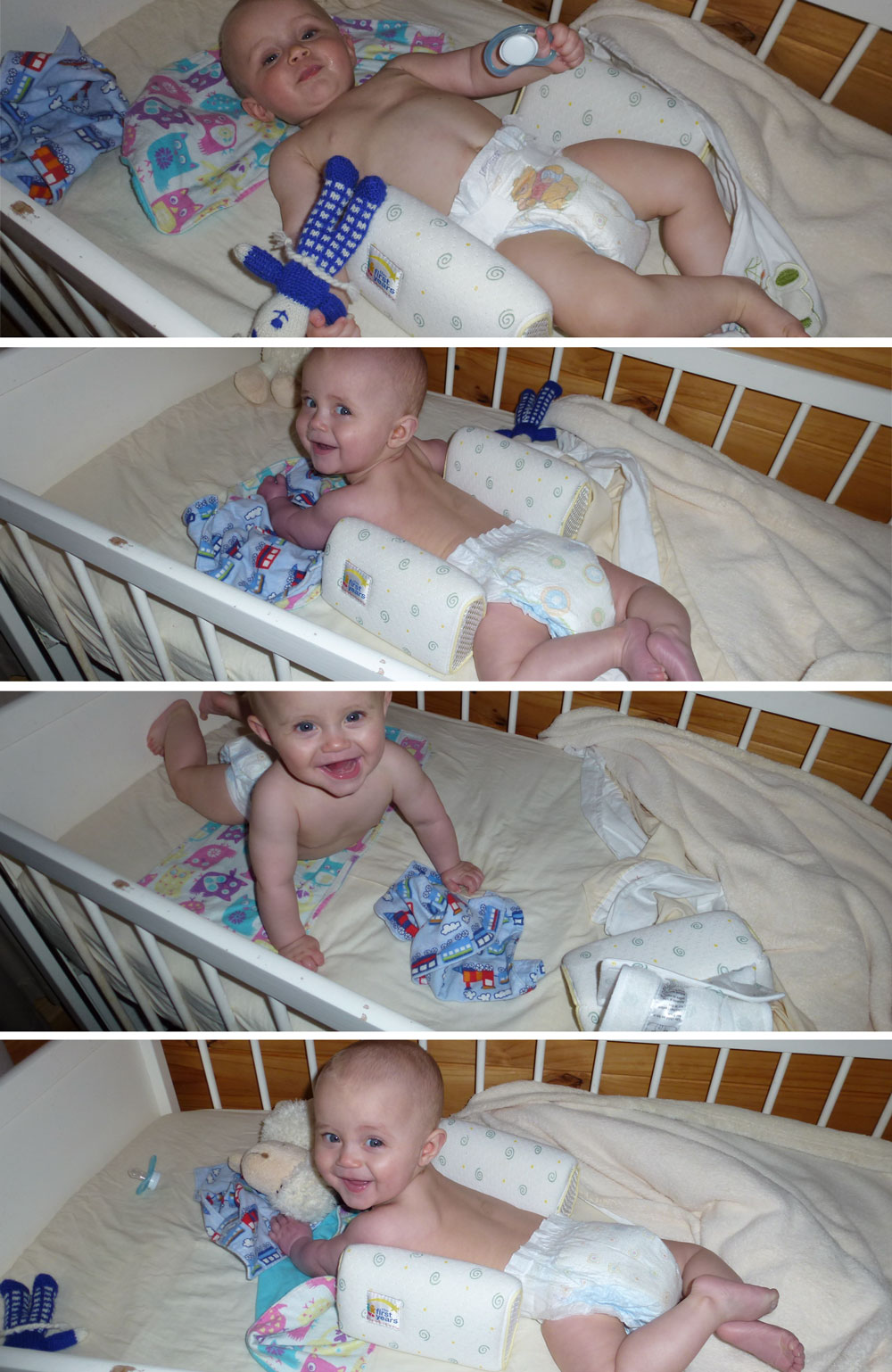The Sleep Positioner that Wasn’t
It seems that in the Kingdom of Blog, time moves differently. I had the best of intentions to post an entry about Timmy’s sleep positioner manipulation skills, but it’s a non-issue now, so I write this half-heartedly, as it all seems rather redundant. Still, at least I can include a more up-to-date report of his nighttime shenanigans — with video! (The embedding-video-in-a-blog thing is experimental, so I’m interested to see how it goes. May or may not happen again, depending.)
Only a couple of weeks ago (but, oh, it seems an age) Timmy had the frustrating habit of rolling onto his belly in bed, then getting distressed about it. He’d happily roll back if he was on his mat, but in his cot he evidently had selective memory.
Not only did the sleep positioner not keep him on his back, I was impressed to see that he was able to flip over without seeming to move it at all. Then my surprise was magnified when I discovered that not only could he work his way out of the thing, but could be neatly back in place by morning — sometimes even lying on his back again. I hadn’t touched him. Neither had my husband. I checked.
This photo was indicative of a typical night:
Thankfully, the tough period is over. Well, that specific tough period, I mean to say — the one where I was frequently having to answer distress calls and go into his room to flip him back over. Now he’s not troubled by being on his belly. He sometimes prefers to sleep that way. Or upside down. Or across the mattress. Or with something over his face. Or with one leg hanging out…
…and there’s our new problem.
No matter how securely I tuck him in, or how close to the wall he begins the night, he’ll almost always have his leg stuck at the thigh in the cot rungs, by morning. Then no longer is he content to talk to his woollen mouse until I come to fetch him. No. He must cry and/or grizzle until I extricate the limb from the complex machinery. Which is fair enough, I suppose. I wouldn’t like it either. But it’s not my favourite morning tradition. I imagine though, that once he learns to move himself forward (so far, the options are backwards or in circles), this too shall pass.
This video shows another amusing behaviour: he’ll often cry at something if he knows I’m watching, but is fine otherwise — naturally, periodic checks are required, for him to know if he ought to keep crying. If he lightly clonks his head on the floor when rolling over, he’ll immediately look for me. If I’m looking at him, he’ll cry until I give him cuddles. If I’m not looking (or rather, only surreptitiously, in my peripheral vision) he’ll wait a few moments, then decide that he’d rather play with his toys than wait for unnecessary condolences, after all.



No Comments Yet.